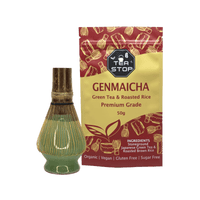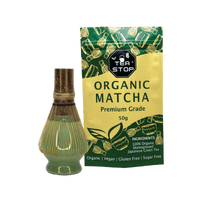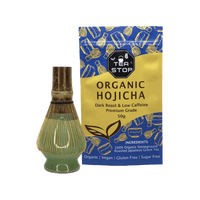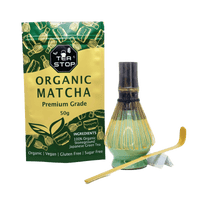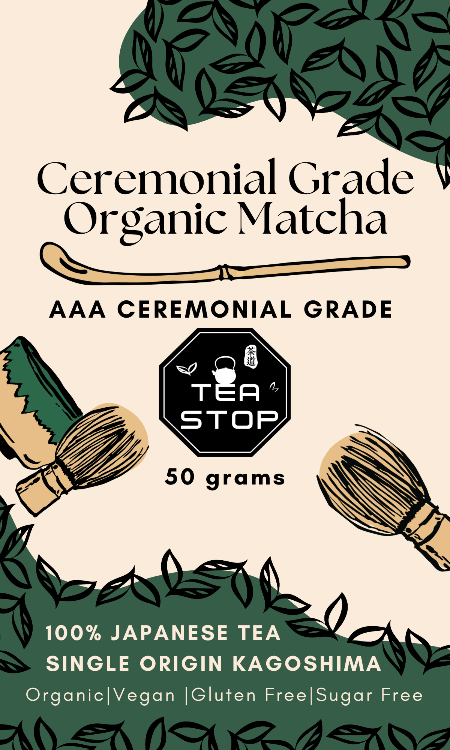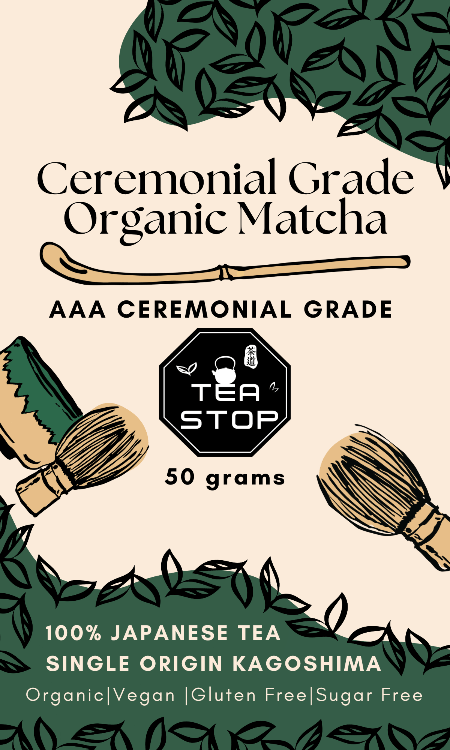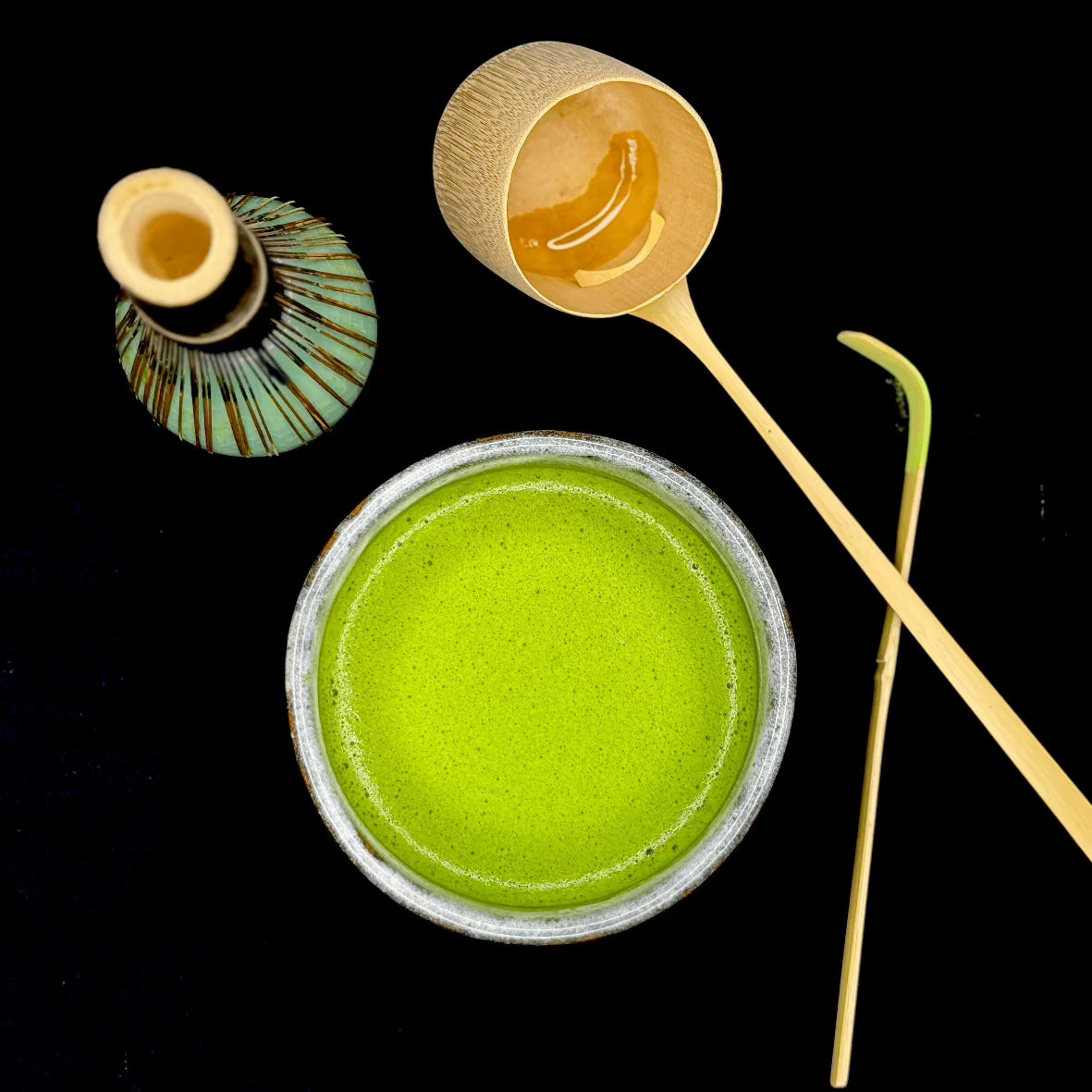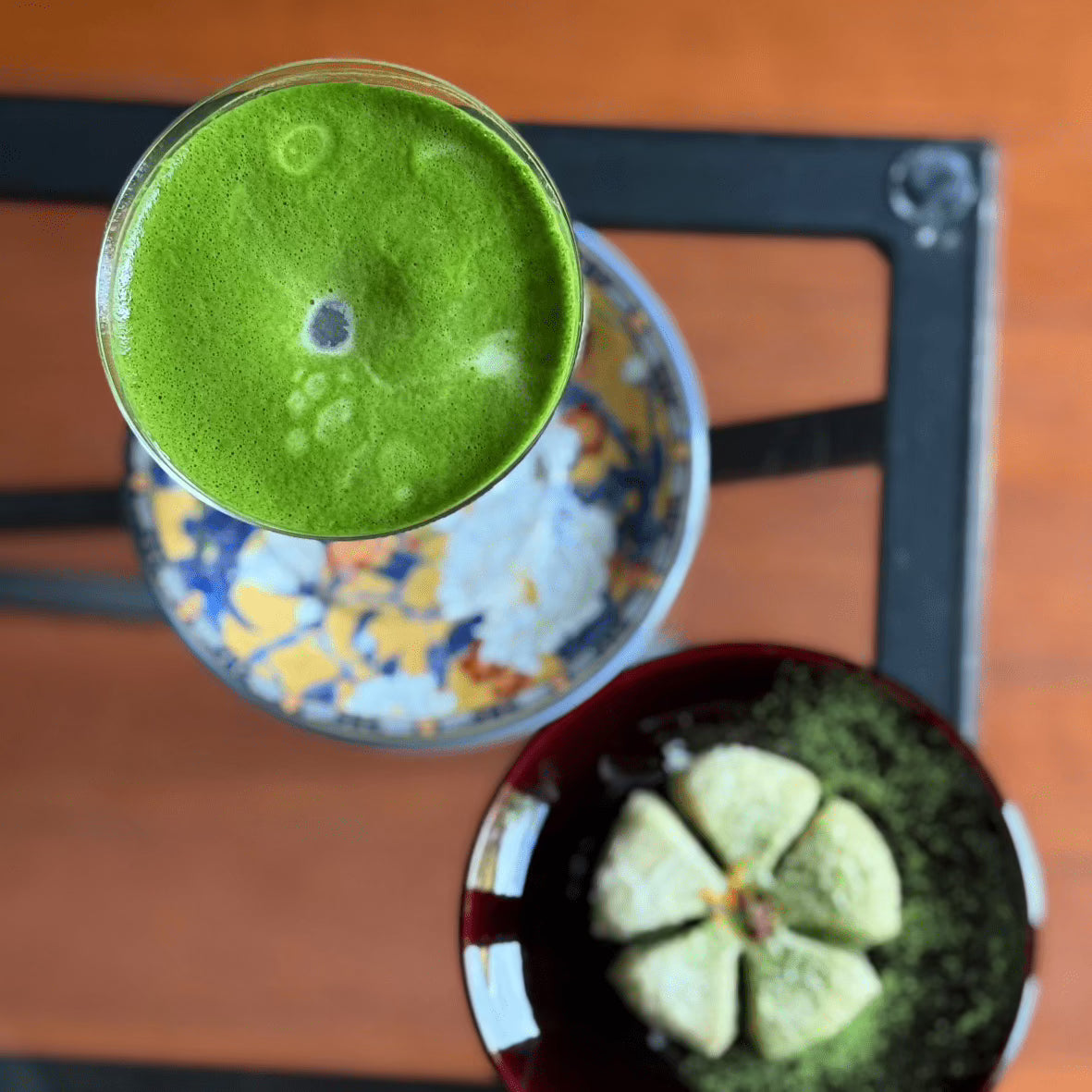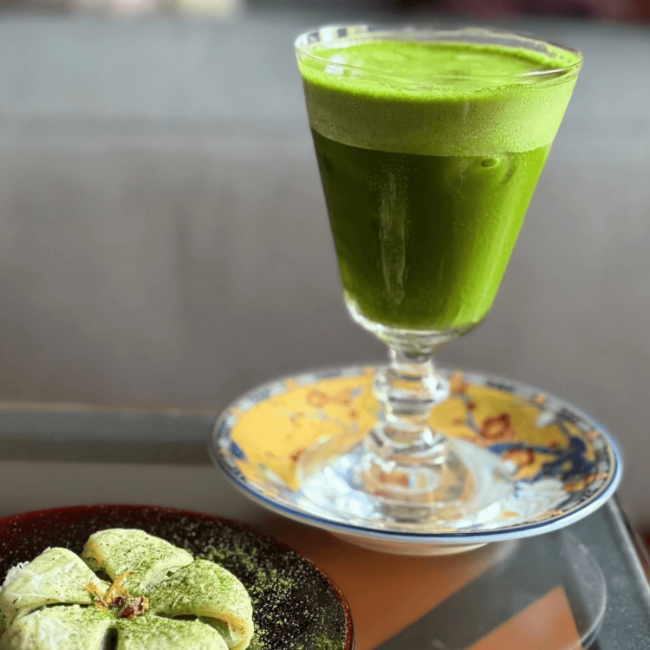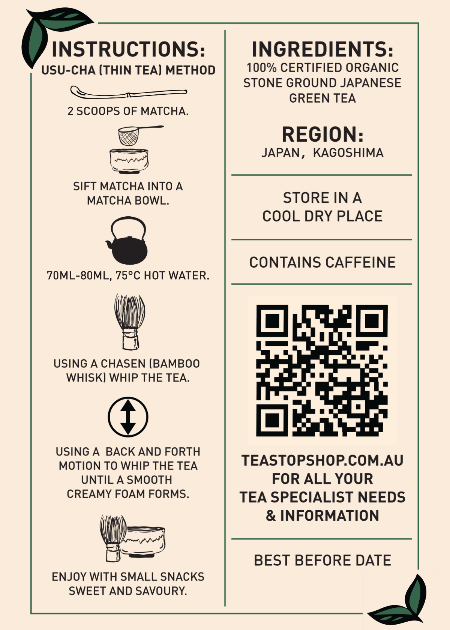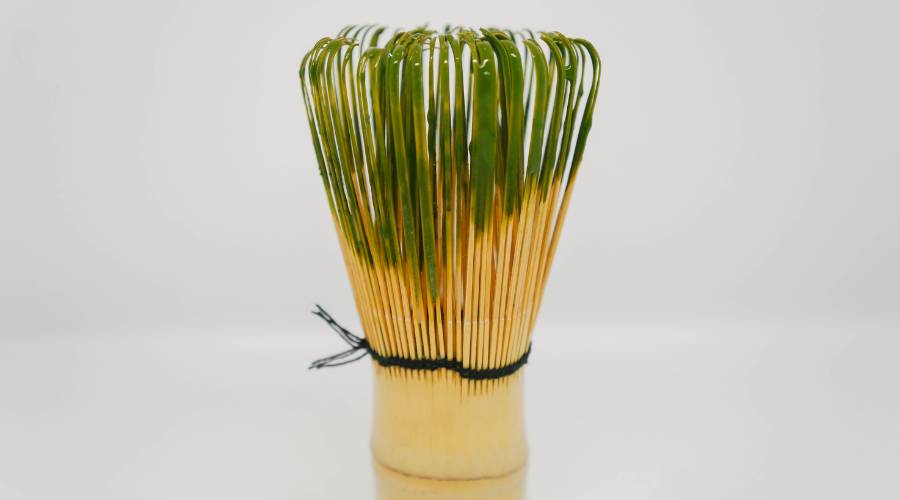
Matcha Whisk Guide: Everything You Need to Know About Choosing and Using Your Chasen
Share
The difference between lumpy, bitter matcha and a smooth, frothy bowl of perfection often comes down to one essential tool: the bamboo whisk, or chasen. While you might be tempted to use a regular kitchen whisk or milk frother, the traditional bamboo matcha whisk has been specifically engineered over centuries to create the ideal texture and foam that defines properly prepared matcha. Whether you're frustrated by clumps in your morning matcha or wondering why your whisk is falling apart after just a few uses, understanding how to choose, use, and care for your chasen will transform your matcha experience. This comprehensive guide reveals everything from selecting the perfect whisk for your needs to mastering the whisking technique that creates café-quality matcha at home.

Understanding the Matcha Whisk: Why Bamboo Matters
The matcha whisk isn't just a mixing tool – it's a precision instrument crafted from a single piece of bamboo, split into dozens of fine tines that create the perfect suspension of matcha powder in water. Each chasen is handmade by craftsmen who have often inherited their techniques through generations, with some whisk-making families dating back over 500 years. The bamboo used is typically white (shirachiku) or purple bamboo (murasaki), chosen for its flexibility, durability, and ability to create fine, delicate tines.
What makes bamboo superior to modern alternatives is its unique combination of rigidity and flexibility. The tines are strong enough to break up clumps yet flexible enough to create microfoam without damaging the delicate matcha particles. The natural properties of bamboo also prevent metallic taste transfer and don't conduct heat, maintaining optimal temperature during whisking. Browse our authentic bamboo whisks handcrafted by traditional artisans.
The whisk's design creates a specific whisking action that incorporates air while fully dispersing the matcha powder, producing the characteristic jade-green foam that crowns a well-made bowl of matcha. This foam isn't just aesthetic – it protects volatile compounds from oxidation and creates the smooth, creamy mouthfeel that distinguishes ceremonial matcha from simply mixed green powder.
Types of Matcha Whisks: Finding Your Perfect Match
By Prong Count:
|
Prong Count |
Type |
Best For |
Characteristics |
|
16-48 prongs |
Araho |
Thick tea (koicha) |
Fewer, thicker tines for dense mixing |
|
60-80 prongs |
Kazuho |
Versatile use |
Balance of foam and mixing power |
|
80-100 prongs |
Standard |
Thin tea (usucha) |
Most common, good foam production |
|
100-120 prongs |
Hyaku-hondate |
Premium usucha |
Fine foam, delicate texture |
By Bamboo Type:
- White Bamboo: Most common, durable, maintains shape well
- Smoked Bamboo: Darker color, slightly more flexible, traditional aesthetic
- Purple Bamboo: Premium option, naturally antimicrobial, beautiful appearance
By Shape:
- Traditional Shape: Bulbous form, excellent for bowl whisking
- Long Handle: Better leverage for larger bowls or standing preparation
- Travel Size: Compact with protective case, perfect for on-the-go
Proper Whisking Technique: The Secret to Perfect Foam
The Basic Motion The key to proper whisking isn't circular stirring but rather a rapid back-and-forth motion that creates the letter "W" or "M" in the bowl. This technique maximizes aeration while preventing the whisk from simply pushing matcha around the bowl's edges.
Step-by-Step Technique:
- Grip: Hold the whisk like a pencil, not in a fist. Your grip should be relaxed but controlled, about 2/3 up the handle.
- Starting Position: Place the whisk in the center of the bowl with tines touching the bottom gently – never press hard.Initial
- Mix: Make a few slow circles to wet all the powder and create a slurry.
-
Speed Whisking:
- Lift the whisk slightly so the tines barely touch the bottom
- Move rapidly back and forth in a W pattern
- Use your wrist, not your whole arm
- Maintain consistent speed for 15-20 seconds
-
Surface Finishing:
- Slow down gradually
- Make gentle circles to break large bubbles
- Lift the whisk slowly from the center to create a foam peak
Common Technique Errors:
- Pressing too hard (damages the whisk and creates a bitter taste)
- Moving too slowly (inadequate foam formation)
- Circular stirring (doesn't incorporate enough air)
- Whisking too long (overaerates and cools the tea)
Caring for Your Matcha Whisk: Maximizing Lifespan
Before First Use: Always season a new whisk by soaking it in warm water for 2-3 minutes. This softens the bamboo, making tines more flexible and less likely to break during initial uses. Gently reshape the tines with your fingers if needed.
Daily Care Routine:
- Pre-whisking: Soak in warm water for 30 seconds to soften tines
- Post-whisking: Rinse immediately under warm water
- Cleaning: Gently remove matcha residue with fingers (never use soap)
- Drying: Shake off excess water and air-dry on a whisk holderStorage: Store on a kusenaoshi (whisk holder) to maintain shape
What to Avoid:
- Soap or detergents (bamboo absorbs flavors)
- Dishwashers (destroys the whisk completely)
- Storing wet (promotes mold growth)
- Storing in closed containers (needs air circulation)

When to Replace Your Matcha Whisk
Even with perfect care, matcha whisks are consumable items designed to be replaced regularly. In Japan, serious practitioners often use a new whisk monthly, though with proper care, a quality whisk can last 3-6 months for daily use.
Signs It's Time for a New Whisk:
- Broken tines (more than 10% damaged)
- Permanent matcha staining that won't rinse cleanLoss of spring in the tines
- Center tines are wearing down significantly
- Mold or persistent odor despite cleaning
- Difficulty creating foam even with proper technique
Alternative Whisking Tools: Modern Options
Electric Matcha Whisk Battery-powered whisks can create decent foam quickly but lack the control and ritual aspect of traditional whisking. Best for office use or when convenience trumps tradition. They tend to create larger, less stable bubbles compared to bamboo.
Milk Frother Handheld milk frothers work in a pinch, but often create too much foam on top while leaving powder at the bottom. The spinning motion doesn't properly integrate matcha throughout the liquid.
Blender or Shaker For matcha lattes or smoothies, blenders work well. Shaker bottles with wire balls can mix matcha for cold drinks, but won't create the traditional foam texture.
Metal Whisks. Some companies make metal "matcha whisks," but these lack the flexibility of bamboo and can create a metallic taste. They're more durable but sacrifice authentic texture and flavor.
While alternatives exist, none replicate the specific action and results of a traditional bamboo whisk.
Choosing Your First Matcha Whisk
For Beginners: Start with an 80-prong white bamboo whisk. This provides good versatility, a reasonable price, and forgiveness for developing technique. Expect to pay $25-40 for a quality starter whisk.
For Daily Drinkers: Invest in a 100-prong whisk for superior foam and consider buying 2-3 to rotate, extending each whisk's lifespan. Budget $40-60 per whisk.
For Ceremony Practice: Choose based on your school's tradition, typically 60-80 prongs for versatility between thin and thick tea. Authentic Japanese-made whisks are essential. Expect $50-100 for ceremony-grade whisks.
For Travel: Compact whisks with protective cases prevent damage. Some have fewer prongs but maintain functionality. Travel whisks typically cost $30-50 with a case.

The Science Behind the Perfect Foam
The foam created by proper whisking isn't just aesthetic – it serves important functions:
Physical Properties:
- Particle suspension prevents settling
- Air incorporation creates a smoother mouthfeel
- Surface tension maintains temperature
- Microfoam protects volatile compounds
Chemical Benefits:
- Increased surface area enhances flavor release
- Oxidation protection preserves antioxidants
- Better dissolution of amino acidsEnhanced bioavailability of nutrients
Studies show properly whisked matcha has 40% better nutrient absorption compared to simply stirred matcha. The mechanical action of bamboo tines creates optimal particle size distribution for both flavor and health benefits.
Troubleshooting Common Whisking Problems
Problem: No foam forms
- Causes: Old matcha, water too cold, whisking too slowly
- Solution: Use fresh matcha, ensure 70-80°C water, and increase whisking speed
Problem: Large bubbles instead of microfoam
- Causes: Whisking too vigorously, wrong angle
- Solution: Maintain a consistent moderate speed, keep the whisk more vertical
Problem: Clumps remain after whisking
- Causes: Not sifting matcha, insufficient initial mixing
- Solution: Always sift first, create a paste before adding remaining water
Problem: Whisk tines breaking frequently
- Causes: Pressing too hard, not soaking before use
- Solution: Lighter touch, always pre-soak, check bowl for rough spots
Why Choose Tea Stop Shop for Your Matcha Whisk
✅ Authentic Japanese-made whisks from certified craftsmen
✅ Range of options for every skill level and budget
✅ Detailed care instructions included with every whisk
✅ Whisk holder included with complete sets
We source our whisks directly from traditional makers in Japan, ensuring authenticity and quality. Each whisk is inspected for craftsmanship before shipping. View our complete whisk collection
Frequently Asked Questions About Matcha Whisks
Can I use a regular kitchen whisk instead?
While possible, kitchen whisks can't create the proper foam texture and may scratch your bowl. The investment in a proper chasen pays off in better flavor and an authentic experience.
How do I know if my whisk is good quality?
Quality whisks have evenly spaced tines, smooth bamboo with no splinters, flexibility without brittleness, and maintain their shape when dry.
Why do some whisks cost over $100?
Premium whisks use rare bamboo types, require more crafting time, and come from renowned artisan families. The difference is noticeable in durability and performance.
Can I repair broken tines?
Individual broken tines can be carefully trimmed with scissors. Once many break, it's time for replacement. Never try to glue or reattach tines.
Should I oil my bamboo whisk?
No, oil can affect matcha flavor and foam formation. Proper drying and storage are sufficient maintenance.
Is there a vegan alternative to bamboo whisks?
Bamboo is already vegan. If concerned about sustainability, look for whisks from managed bamboo forests with replanting programs. Learn about sustainable bamboo sourcing
Master Your Matcha with the Right Whisk
Your matcha whisk is more than a tool – it's your partner in creating the perfect bowl of matcha. By choosing the right whisk for your needs, mastering proper technique, and maintaining it with care, you'll consistently produce smooth, frothy matcha that rivals any tea house. Remember that, like any skill, whisking improves with practice, and even experienced practitioners continue refining their technique.
Start with a quality whisk suited to your experience level, practice the fundamental W-motion technique, and establish a care routine that extends your whisk's life. Soon, the meditative rhythm of whisking will become a cherished part of your daily ritual.


